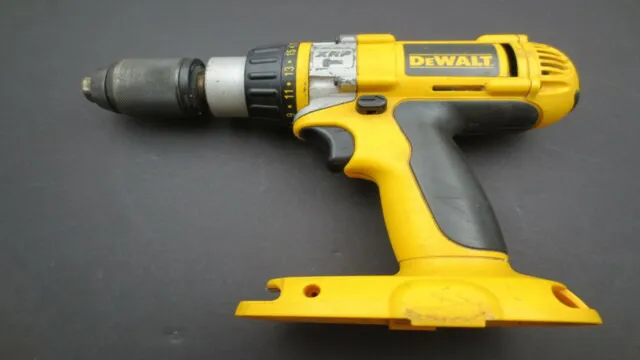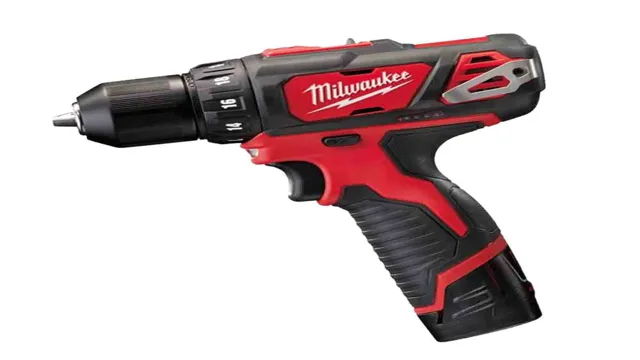Will Getting Sand in My Cordless Drill Mess It Up? Tips to Clean and Prevent Damage.

Have you ever been working on a project that required drilling through a thick layer of sand in order to set up a fence or dig a hole for a post? While sand is great for play and beach activities, it can quickly become a nuisance when trying to complete construction projects. But, can sand actually damage your cordless drill? The short answer is yes. Sand contains tiny grains that can easily get trapped inside your drill’s gears and cause unnecessary wear and tear.
Keep reading to learn more about how sand can damage your cordless drill and what you can do to prevent it.
Understanding the Impact of Sand on Cordless Drills
If you’re wondering whether getting sand in your cordless drill will mess it up, the short answer is yes. Sand can be extremely damaging to cordless drills, especially if it works its way into the internal components. When sand enters the drill’s motor or gears, it can cause these parts to malfunction or become jammed.
This can lead to a loss of power or even complete failure of the drill. Additionally, sand can get into the drill’s battery compartment, which can also cause problems. The sand can corrode the battery’s terminals, leading to poor performance or even a shortened lifespan for the battery.
To avoid these issues, it’s important to keep your drill clean and free from sand and other debris. If you do end up getting sand in your drill, try to clean it out as soon as possible. Use compressed air or a soft brush to remove any visible sand from the drill’s internal components and battery compartment.
In conclusion, while getting sand in your cordless drill may seem like a minor inconvenience, it can actually have serious consequences. To keep your drill in good condition, make sure to clean it regularly and avoid exposing it to sand and other debris whenever possible.
Mechanical Damage from Sand
Cordless drills are a handy tool for all sorts of tasks, but they are not impervious to damage. Sand, in particular, can cause mechanical damage to your cordless drill. When sand gets into the moving parts of your drill, it can cause friction and wear that will eventually lead to the drill failing.
The grit in the sand can also scratch the surface of the drill, removing any protective coating it may have and leaving it vulnerable to rust and other types of corrosion. To avoid damage from sand, it’s important to use your cordless drill in a clean, dry environment and to avoid drilling in sandy areas whenever possible. If you must drill in a sandy area, be sure to clean your drill after each use to remove any sand that may have gotten inside.
By taking these simple steps, you can extend the life of your cordless drill and ensure it’s always in top working condition. Keyword: cordless drill, sand, mechanical damage.

Electrical Damage from Sand
When we think of cordless drills, the first thing that comes to mind is probably not sand damage. However, it’s important to understand the impact that sand can have on electrical equipment, including cordless drills. Sand particles can infiltrate even the most protected parts of a cordless drill, and over time, these particles can cause damage to the motor and other internal components.
The result can be reduced performance or even the total breakdown of the drill. It’s crucial to protect your cordless drill from sand damage by keeping it away from sandy environments or, if that’s not possible, by cleaning it thoroughly after each use. By taking these simple precautions, you can ensure that your cordless drill stays in top working order for years to come.
Preventing Sand Damage to Your Cordless Drill
If you’re working on a construction site or doing DIY projects that involve working outdoors, you may wonder if getting sand in your cordless drill will mess it up. The answer is yes, it can. Sand can cause damage to the gears of your drill and can cause corrosion in the motor.
This can result in decreased performance or even complete malfunction. To prevent sand damage to your cordless drill, be sure to keep it covered and use a protective sleeve when not in use. If you do get sand in your drill, be sure to clean it out thoroughly and avoid using it until it’s been completely dried out.
With proper care, your cordless drill can operate smoothly for years to come, even in challenging environments.
Cleaning Your Drill After Each Use
Preventing Sand Damage to Your Cordless Drill If you use your cordless drill for DIY projects, you know how important it is to keep it clean and well-maintained. Sand and other debris can quickly damage your drill, leading to costly repairs or replacements. To prevent sand damage to your cordless drill, it’s essential to clean it thoroughly after each use.
You May Also Love:
Start by wiping down the exterior of the drill with a damp cloth to remove any dirt or dust. Next, use a soft-bristled brush to gently clean the vents and other openings where sand can enter. Be sure to remove any battery or bits beforehand to prevent water damage.
Once you’ve cleaned the exterior, remove the chuck and clean the threads with a brush or rag. For the chuck itself, use a bit of rubbing alcohol and a cotton swab to remove any built-up grime or debris. Avoid using harsh chemicals or abrasive materials that can scratch or damage the chuck.
Regularly cleaning your drill not only prevents sand damage but also prolongs the life of your tool. So, make it a habit to clean your cordless drill after each use, and you’ll save time and money in the long run. Remember, prevention is always better than cure, so take good care of your cordless drill, and it’ll serve you well for many years to come.
Using Protective Cases and Coverings
Protective cases and coverings are essential to prevent sand damage to your cordless drill. Sand can be harmful to the drill’s motor, speed selector and gearbox. Using a protective covering will ensure that sand does not enter the drill’s ventilation system, and it will keep the drill clean, increasing its longevity of use.
A protective case is ideal for storing the drill when not in use, as it will safeguard it from getting knocked around, scratched or dented. Furthermore, using a protective case and covering will also assist in keeping all the parts of the drill together, close at hand, and readily accessible the next time you need to use it, making work more efficient, enjoyable and safe. In summation, to keep your drill in great working condition and to extend its useful life, invest in a protective case or covering.
Final Thoughts
If you’re wondering whether getting sand in your cordless drill will mess it up, the short answer is “yes, it can.” Sand is abrasive, and it can cause damage to the internal workings of your drill. The effects may not be immediately noticeable, but over time, the sand can wear down the gears and other mechanical parts, causing them to malfunction or break.
Once this happens, you may need to replace the affected parts or even the entire drill. To avoid this problem, it’s best to keep your drill away from sandy areas or use protective covers to keep sand and other debris out. Regular cleaning and maintenance can also help prevent damage from occurring.
So, if you want your cordless drill to last as long as possible, it’s best to avoid exposing it to sand whenever possible.
Conclusion
In summary, getting sand in your cordless drill is not ideal, but it doesn’t have to be the end of the world. Just like shaking off the sand from your shoes after a day at the beach, make sure to clean off your drill after use. And if you do happen to get some grit inside, take it apart and give it a good cleaning.
With a little bit of TLC, your cordless drill can continue to be a trusty tool in your toolbox, beach trips and all.”
FAQs
1. Can sand damage a cordless drill? A: Yes, sand can damage the sensitive components of a cordless drill, causing it to malfunction or stop working altogether. 2. What should I do if I accidentally get sand in my cordless drill? A: If you accidentally get sand in your cordless drill, you should immediately turn it off and carefully remove the sand particles using a soft brush or compressed air. 3. How can I prevent sand from getting in my cordless drill? A: To prevent sand from getting in your cordless drill, avoid using it in sandy or dusty environments. If you must use your drill in these conditions, cover it with a protective sheath or use a vacuum attachment to remove debris as you work. 4. Will using a protective cover on my drill prevent sand damage? A: Yes, using a protective cover on your drill can help prevent sand damage. Look for covers that are designed specifically for your model of drill, and make sure they fit snugly and securely. 5. Is it safe to clean my cordless drill with water if it gets sand in it? A: No, you should never clean your cordless drill with water if it gets sand in it. Water can damage the delicate electronics inside the drill and cause corrosion. Instead, use a soft brush or compressed air to remove the sand particles. 6. Can sand damage the battery of a cordless drill? A: Yes, sand can damage the battery of a cordless drill, reducing its capacity and causing it to malfunction. To prevent sand damage, always store your drill and its battery in a clean, dry location. 7. How often should I clean my cordless drill to prevent sand damage? A: You should clean your cordless drill regularly, especially if you use it in sandy or dusty environments. Aim to clean it after every use, and more frequently if you notice sand or debris accumulating on the surface.



